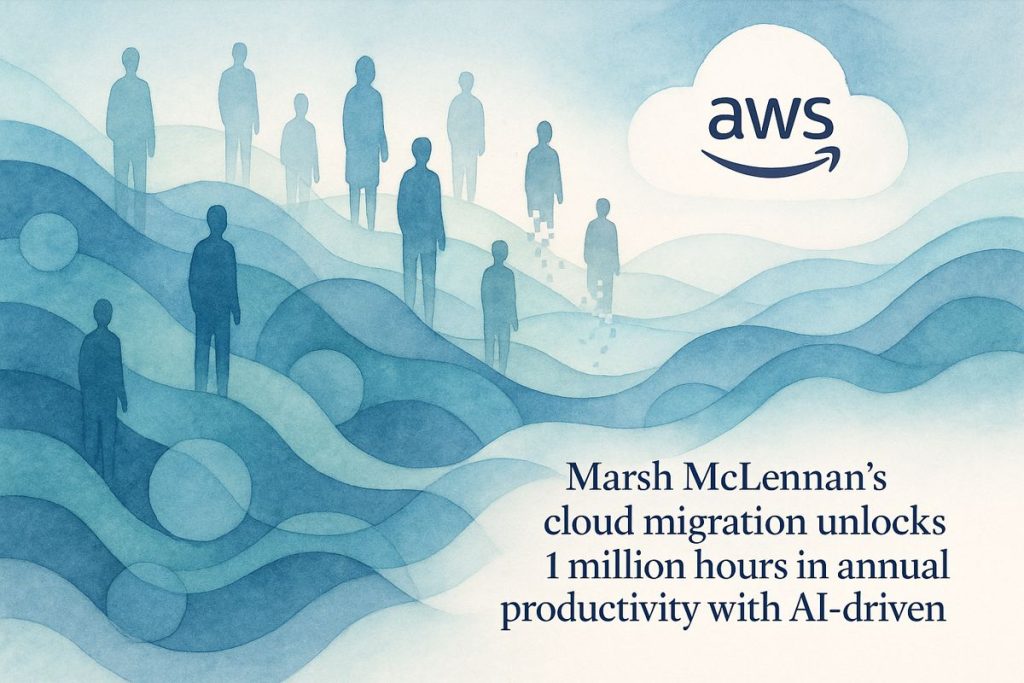Marsh McLennan is moving most of its old computer systems to the Amazon cloud (AWS). This huge change will help them work faster, safer, and smarter, and use powerful AI tools like their own assistant, LenAI. The shift means closing many old data centers, uniting their technology teams, and making sure everything stays super secure. By moving to the cloud, Marsh McLennan hopes to stay ahead in a fast-changing world, making their work smoother and ready for the future. This bold move shows how even the oldest companies can use new tricks to transform and thrive.
What is Marsh McLennan’s AWS cloud migration and why is it significant?
Marsh McLennan is undertaking one of the largest cloud migrations in its sector, moving most on-premises infrastructure to Amazon Web Services (AWS). This shift aims to modernize operations, enhance security and compliance, boost scalability, and drive innovation through AI and cloud-native capabilities across its global business.
Old World, New Tricks: The Seeds of Transformation
You know that scent of burnt espresso when you’re up late wrangling with a legacy system that just won’t submit? I’m betting Marsh McLennan knows it intimately. This old lion—founded back in the days when the telegraph was considered hyperspectral tech—has made its fortune navigating the labyrinths of risk, reinsurance, and human capital. Now, in one of those “is this bold or bonkers?” moves, Marsh McLennan has announced a sweeping, multi-year migration of most on-prem infrastructure to Amazon Web Services (AWS).
Their public declaration in May 2025 wasn’t just a press release; it landed with the thud of a book being slammed shut—an era ending, both for Marsh McLennan and for the pantheon of sprawling, legacy-bound professional service firms. With 90,000 staff scattered across 130+ countries, the ambition is—let’s put a number on it—one of the largest cloud migrations in the sector’s history. Picture a flotilla of data centers shutting down, except for one stubborn flagship facility holding steady until the final act. I had to stop and ask myself: How do you move the digital DNA of a company so old it makes IBM look like a plucky upstart, without dropping a single strand?
According to Paul Beswick, their Chief Information and Operations Officer, the answer was iteration. Each migration phase is a kind of living palimpsest—lessons inscribed, erased, recopied—incrementally more automated, less error-prone, and, you hope, less caffeinated. If you want the official rundown (and, frankly, a bit of corporate optimism), see CIODive’s profile.
The Architecture of Change: MMTech and the Machinery Beneath
But let’s not be coy: technical bravado alone doesn’t move mountains (or petabytes). Before this migration even lifted its first byte, Marsh McLennan underwent an organizational molting—rolling out MMTech, a unified technology group that would, in theory, dissolve those infamous silos. This was the kind of move that makes consultants nod sagely and engineers mutter, “We’ll see.” Yet it worked: rapid-fire digital deployment, unified standards, and the groundwork for genuine cloud-native operations, all humming beneath the surface. The new core application platform—think of it as the company’s digital nervous system—is now poised to stretch and flex across AWS’s hyperscale architecture.
Integration, though, isn’t just a matter of plugging in and praying. Marsh McLennan’s operations are a Gordian knot of insurance broking, reinsurance, and management consulting—each with its favorite arcane system humming in some basement. The migration touches everything: transactional platforms, analytics, even a few tools whose interfaces look straight out of Windows 95 (guilty: I once spent a week scripting around one). If you want a taste of the technical undercurrents, opentools.ai’s summary is a decent primer.
But the real magic trick? The company relies on AWS’s security-first ethos and a veritable menagerie of compliance certifications to not just meet, but pre-empt regulatory headaches. Insurance is a domain where data isn’t just valuable—it’s radioactive. The hum of server fans is being replaced by the white-noise thrum of encryption and real-time auditing. Does that bring peace of mind, or just a different flavor of anxiety? Time will tell.
AI as Compass: LenAI, Numbers, and the Tactile Future
Here’s where the story gets tactile—almost sensorial. Marsh McLennan’s Dublin Innovation Center unleashed LenAI, an internal AI assistant that chews through over 700,000 queries a week—saving, by their tally, a million hours of productivity annually. For context, that’s roughly 114 years, or the time it takes to read a small stack of insurance contracts. Originally built atop OpenAI and Microsoft’s robust LLMs, LenAI is about to lap up AWS’s machine learning elixir, promising even deeper insights and smoother automation. It tickles the mind to imagine what new patterns will emerge when all that data is filtered through hyperspectral ML lenses.
But, confession: I once overestimated what an AI assistant could do, promising a manager it’d automate away an entire workflow. It didn’t—at least not at first. The lesson? Tools like LenAI aren’t silver bullets, but they’re excellent for chipping away at the bureaucratic mountains that accrete in a 150-year-old firm. There’s a kind of low hum—maybe even a whiff of ozone—when the AI’s working as it should.
Aftershocks and Echoes: Strategic Drivers and Human Toll
What’s driving all this? The usual suspects, but with a twist of existential urgency. AWS’s flexible infrastructure means the company can scale like a Russian nesting doll—big or small, as needed. Security and resilience come bundled; the cost model is usage-based, so theoretically, no more paying for unused racks humming in the dark. But the real prize is agility: rolling out new services faster than a competitor can say “digital twins.”
The tectonic plates of the industry are shifting, too. Marsh McLennan isn’t just chasing its own tail—this is part of a sector-wide metamorphosis.
